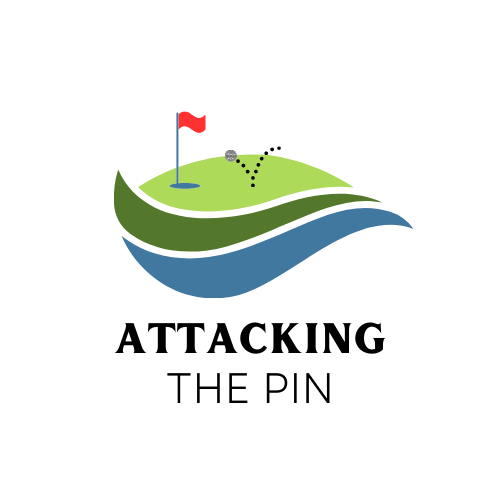There are a few things you can do to start the downswing in golf. One is to make sure your weight is positioned over the ball. You should also keep your head down and make a smooth motion with your arms and hands. If you can do these things, you’ll be on your way to starting the downswing correctly.
One of the most important things to remember when starting the downswing is to keep your weight positioned over the ball. If you move your weight too far forward, you’ll lose power and accuracy. You should also keep your head down so you can stay focused on the ball.
Another key part of starting the downswing correctly is making a smooth motion with your arms and hands. If you swing too fast, you’ll lose control and accuracy. So make sure to take your time and make a smooth motion. This will help you get the most out of your downswing.
Follow these tips and you’ll be on your way to starting the downswing correctly. Just remember to stay focused on the ball and make a smooth motion with your arms and hands. With a little practice, you’ll be able to start the downswing like a pro!

Steps To Start Downswing
The takeaway is huge, but there’s an old adage that says, “You don’t hit the golf ball with your backswing.” Throughout history, we’ve seen a lot of exceptional players swing the club in their own distinctive way. Jim Fuyrk and Matt Kuchar are two of the most successful PGA Tour golfers in history, and they’re as different as night and day at the top of their swings. The gap between striking a shot and descending is known as the golf downswing. That is true.
- Sequence
The sequence is the most essential element in determining how to begin the downswing in golf. This is the genetic code of a golf swing, and it distinguishes great players from high handicappers. There is a pattern of motion that is required for power and consistency, just as there is in shooting a basketball, pitching a baseball, and virtually all other athletic activities. Understanding and learning this movement pattern will allow you to have a swing that you can truly call your own.
- Focus On The Left Heel
The golf swing starts from the ground up. As the upper body and arms are still going back, the lower body is starting the downswing. Putting pressure into the lead foot early in the transition is a big key to setting up the rest of the downswing.
- Knees Should Be in Line With The Hips
The hips and the downswing are two intriguing subjects. In actual fact, before anything else, the hips retreat toward their aim. Many players, on the other hand, may believe their knees to be the beginning of the downswing. The most significant thing to remember here is to think about how to begin the downswing from the ground up. The ground is necessary for effective sequence and power, yet utilizing it effectively might be very beneficial.
- Rotate The Back
The body’s descent aids in the lowering of the hands, and it permits them to move out in the transition. The arms, on the other hand, should not yet be acting independently. Ending up in the Death position by first using your arms and pulling from the top is a fantastic technique to have a steep shaft angle or a tight downswing. Consistent balls are rare from this posture. I adore passive arms and hands throughout the transition. Take your time and wait for the body to start in a good position as the hands drop toward the bottom of the downswing. From there, just use your arms and hands like you would with other athletic activities.
- Tuck Your Trail Elbow Behind You
The baton is passed on to the arms when the lower body begins its downswing, and the upper torso follows swiftly. The trail elbow that is located near to, but below, the lead elbow gets the club-ready with body rotation and additional power by allowing for a big gap between your elbows at the top or after the transition! You’ll end up in the position of death if your elbows are too far apart at either stage.
- To Keep The Lead Shoulder Down, Hold It To The Ground
Another thing I see with players who have trouble shallow-cuffing the club is that they use their shoulders to get their trail arm underneath their lead arm. If your lead shoulder rises too quickly, you will stand up and become even less consistent than before.
- Maintain Your Wrist Hinge
When the clubhead falls behind your hands, it’s almost unavoidable because of the incorrect lower body, torso, and arm sequence. In fact, for many top players, a well-sequenced golf swing may result in too much lag. This is unusual for most people, but if you’re attempting to create lag by forcing it, there’s probably a problem with your sequence.
- Shift Your Weight
The ability to transfer pressure from your hands to the club is crucial in all solid golf swings. Early pressure should be applied to the trail foot in the backswing. As the backswing nears its conclusion, pressure should be transferred back into the lead foot. The torso, arms, and hands follow subsequently as a result of this shift backwards and through at precisely the right time. One of the key factors behind good timing and rhythm in a golf swing is a successful shift backwards and through at just the right moment.

Final Thoughts
If you don’t receive feedback, why would you ever try to learn without it? Swing Align helps with a variety of aspects of the golf swing, all in one wearable gadget that may help you practice positions as well as hit real-life golf shots. Because of the extremely notable alignment rod, you may notice the lowering of the lower body before it opens up with the upper body, allowing you to rehearse much more effectively. You’re able to keep your spine angle consistent while practising, which is something that is difficult to do on your own. Additionally, you can practice how to start the downswing in golf and see instant results!
Articles You Might Enjoy Reading






